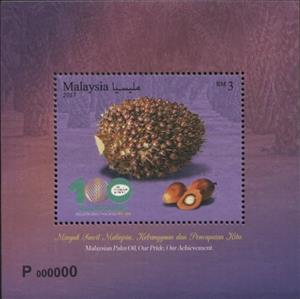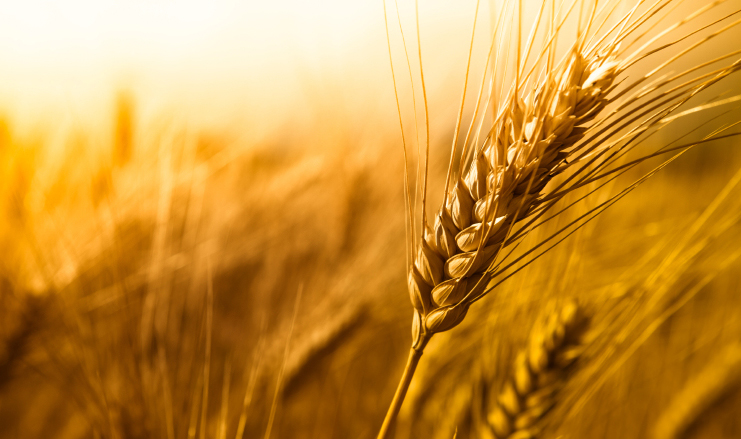Souvenir Sheet: Palm fruit cluster (Malaysia 2017)
Palm fruit cluster (Malaysia 2017)
18 May (Malaysia ) within release 100th Anniversary of Oil Palm Industry goes into circulation Souvenir Sheet Palm fruit cluster face value 3 Malaysian ringgit
| Souvenir Sheet Palm fruit cluster in catalogues | |
|---|---|
| Michel: | Mi: MY BL227 |
| WADP Numbering System - WNS: | WAD: MY 034MS.17 |
Souvenir Sheet is square format.
Malaysia celebrates 100th year anniversary of the oil palm industry.Also in the issue 100th Anniversary of Oil Palm Industry:
- Souvenir Sheet - Palm fruit cluster face value 3;
- Souvenir Sheet - Palm fruit cluster face value 3;
- Stamp - Various palm oil products face value 60;
- Stamp - Harvesting and collecting face value 80;
- Stamp - Oil palm transportation in farm face value 1;
Souvenir Sheet Palm fruit cluster it reflects the thematic directions:
Agriculture is the cultivation and breeding of animals, plants and fungi for food, fiber, biofuel, medicinal plants and other products used to sustain and enhance human life.[1] Agriculture was the key development in the rise of sedentary human civilization, whereby farming of domesticated species created food surpluses that nurtured the development of civilization. The study of agriculture is known as agricultural science. The history of agriculture dates back thousands of years, and its development has been driven and defined by greatly different climates, cultures, and technologies. Industrial agriculture based on large-scale monoculture farming has become the dominant agricultural methodology.
A crop is a plant that can be grown and harvested extensively for profit or subsistence. In other words, crop is a plant or plant product that is grown for a specific purpose such as food, fibre or fuel.
When plants of the same species are cultivated in rows or other systematic arrangements, it is called crop field or crop cultivation.
In botany, a fruit is the seed-bearing structure in flowering plants (also known as angiosperms) formed from the ovary after flowering. Fruits are the means by which angiosperms disseminate seeds. Edible fruits, in particular, have propagated with the movements of humans and animals in a symbiotic relationship as a means for seed dispersal and nutrition; in fact, humans and many animals have become dependent on fruits as a source of food. Accordingly, fruits account for a substantial fraction of the world's agricultural output, and some (such as the apple and the pomegranate) have acquired extensive cultural and symbolic meanings. In common language usage, "fruit" normally means the fleshy seed-associated structures of a plant that are sweet or sour, and edible in the raw state, such as apples, bananas, grapes, lemons, oranges, and strawberries. On the other hand, in botanical usage, "fruit" includes many structures that are not commonly called "fruits", such as bean pods, corn kernels, tomatoes, and wheat grains. The section of a fungus that produces spores is also called a fruiting body.
The Arecaceae is a family of perennial, flowering plants in the monocot order Arecales. Their growth form can be climbers, shrubs, tree-like and stemless plants, all commonly known as palms. Those having a tree-like form are called palm trees. Currently, 181 genera with around 2,600 species are known,
most of which are restricted to tropical and subtropical climates. Most palms are distinguished by their large, compound, evergreen leaves, known as fronds, arranged at the top of an unbranched stem, except for the Hyphaene genus, who has branched palms. However, palms exhibit an enormous diversity in physical characteristics and inhabit nearly every type of habitat within their range, from rainforests to deserts.




